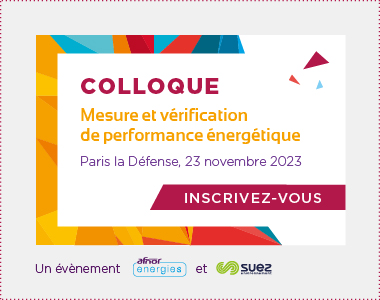There are many sources of renewable energy, whether for producing heat, cold or electricity, for use in industry, construction, services or transport.
And they’re just as difficult to develop!
And yet, the massive use of renewable energies is, alongside energy efficiency and sobriety, one of the pillars of the energy transition. To develop large-scale production and distribution infrastructures based on renewable energies, there are good practices to be applied and trust capital to be built up.
What are renewable energy sources?
An energy source is said to be renewable when it draws on a local natural resource that is available without limits: wind (wind energy), sun (thermal to produce hot water, photovoltaic to produce electricity), wood, algae and biomass (oriented towards combustion to produce heat and/or electricity, towards methanization to produce biogas), water from seas, water tables and rivers (hydraulic dams, geothermal energy, tidal energy from currents, wave energy from swell, etc.).).
In this respect, they are opposed to fossil fuels (coal, oil, gas), which are neither derived from natural resources (in the sense that they are the fruit of a natural process that took a very long time to produce), nor are they local, unlimited or climate-neutral.
What’s the difference between renewable and carbon-free energy?
All renewable energies are classified as low-carbon because, with the exception of uncontrolled biogas leaks, their operation generates no CO2 (the main greenhouse gas responsible for climate disruption) in greater quantities than the resource has sequestered. Burning biomass (in a properly equipped plant) means releasing into the atmosphere the carbon that the biomass has previously captured for its growth. For wind and solar power, no carbon atoms are involved in energy production, apart from those needed to manufacture the equipment.
Only one energy source can claim to be carbon-free without being renewable: nuclear power. Nuclear power uses a non-renewable mineral resource, uranium, but without releasingCO2 into the atmosphere during the fission process – with the exception of steam plumes from cooling towers. This is why France and its 56 reactors have a low-carbon electricity mix.
What are the development targets for renewable energies?
The French roadmap identifies renewable energies as one of the key areas for achieving the European objective of reducing greenhouse gas emissions by at least 55% by 2030 compared to 1990 levels:
- Law of August 17, 2015 on energy transition for green growth (LTECV): 23% renewable energies in final energy consumption in 2020 and 32% in 2030. This latter target is broken down as follows: 40% for electricity, 10% for gas, 15% for energy used for transport and 38% for energy used to produce heat.
- Law of March 10, 2023 on accelerating the production of renewable energies: 100 GW of solar power, 40 GW of offshore wind power, 40 GW of onshore wind power
- European climate-energy package: at least 27% renewable energies in energy consumption by 2030
- European RED III directive of 2023: 42.5% renewable energies in final energy consumption by 2030


